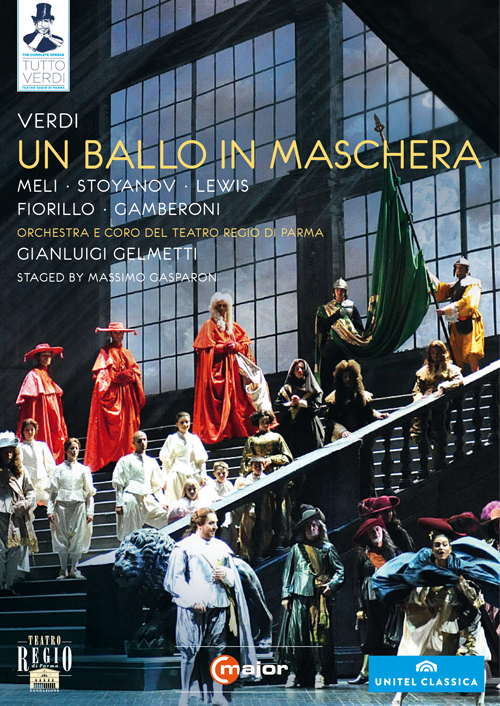Available Worldwide
VERDI, G.: Ballo in maschera (Un) (Teatro Regio di Parma, 2011) (NTSC)
Giuseppe Verdi
UN BALLO IN MASCHERA
Riccardo – Francesco Meli
Renato – Vladimir Stoyanov
Amelia – Kristin Lewis
Ulrica – Elisabetta Fiorillo
Oscar – Serena Gamberoni
Silvano – Filippo Polinelli
Samuel – Antonio Barbagallo
Tom – Enrico Rinaldo
Un giudice – Cosimo Vassallo
Un servo d’Amelia – Enrico Paolillo
Parma Teatro Regio Chorus and Orchestra
(chorus master: Martino Faggiani)
Gianluigi Gelmetti, conductor
Massimo Gasparon, stage director (after Pierluigi Samaritani)
Pierluigi Samaritani, set and costume designer
Andrea Borelli, lighting designer
Roberto Mari Pizzuto, choreographer
Recorded live from the Teatro Regio di Parma, 1, 5, 9, 13, 20, 23 October 2011
Bonus:
- Introduction to Un Ballo in Maschera
Picture format: NTSC 16:9
Sound format: PCM Stereo / DTS 5.1
Region code: 0 (worldwide)
Subtitles: Italian, English, German, French, Spanish, Chinese, Korean, Japanese
Running time: 138 mins (opera) + 11 mins (bonus)
No. of DVDs: 1 (DVD 9)

Verdi dominated the world of Italian opera from his first considerable success in 1842 with Nabucco until his final Shakespearean operas Otello, staged at La Scala, Milan in 1887, and Falstaff, mounted at the same opera house in 1893. His career coincided with the rise of Italian nationalism and the unification of the country, causes with which he was openly associated.
Operas
The best known of Verdi’s 28 operas are Nabucco (‘Nebuchadnezzar’), Macbeth, Rigoletto, Il trovatore, La traviata, Les Vêpres siciliennes (‘The Sicilian Vespers’), Simon Boccanegra, Un ballo in maschera (‘A Masked Ball’), La forza del destino (‘The Force of Destiny’), Don Carlo, Aida, Otello and Falstaff.
Church Music
In addition to settings of the Te Deum and the Stabat Mater Verdi wrote an impressive large-scale setting of the Requiem, its origin stemming from the death of Rossini in 1868 and the death of the writer Manzoni. The Requiem is a work of operatic magnificence, none the less moving for its theatrical elements.
The Quattro pezzi sacri (‘Four Sacred Pieces’) were written at various times in Verdi’s later years. The first, Ave Maria sulla scala enigmatica, written in 1889, was followed in publication by Stabat mater, Laudi alla Vergine Maria (on a text from Dante), and Te Deum for double chorus and orchestra. The Quattro pezzi sacri were published in 1898.































